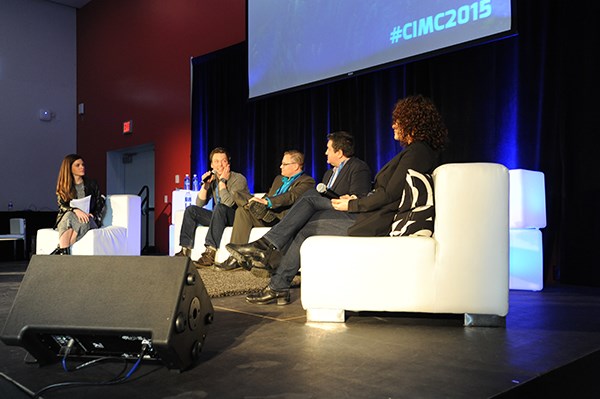It’s not the place you would expect a debate to break out about the importance of print.
But that’s exactly what happened on Saturday morning at the first Canadian Internet Marketing Conference at Quest University on the weekend.
Panelist Charlene Rooke started the debate by calling print a “fetish” product. “I think print magazines are becoming sexy again,” she told the crowd of 200. “People love print…. Readers love print.”
Tom Gierasimczuk of Western Media Group said he’s puzzled when media buyers tell him they “don’t do print.”
“To absolutely dismiss 300 years of a communication platform is just beyond curious,” he said.
He advised marketers to reach a business’s target customers, “find out what they are reading, what they are consuming…. Don’t just try to interrupt them with an ad next to what they are reading. Look at print as a gateway into an ecosystem experience.”
He suggests using print advertising in creative ways and having a call to action.
However, panelist Tim Shoults of Glacier Media said advertising isn’t an interruption to readers, rather a “part of the mix” of information.
But the fourth panelist, UBC journalism professor Alfred Hermida, said mobile is a much better way to reach young people and urban commuters.
“There is nothing natural about print. It’s not the way we consume information naturally… it’s just the way we have been accustomed to consuming it since the invention of the printing press. My students in their 20s get information on computers and increasingly on mobile.”
He acknowledged that “they might buy the magazine… but you won’t have the circulation numbers you have now.”
Panel moderator Sunny Lenarduzzi said the challenge for marketers is to leverage both print and digital. “When I get an actual letter or paper invite to something, that means more to me than an email,” she said.
Rooke said the key is to meld words and visuals and create interaction. “We are all looking for that jolt of information.”
Quality journalism is important, said Gierasimczuk. “We want to be next to trusted, authoritative news stories…. That is why we advertise.”
Marketing is about building a relationship with an audience that will derive value from it, said Hermida. He cited Red Bull as an example of a brand that does this well.
“What you are selling is not this fizzy drink that tastes horrible,” he said. “You are selling: This is what you can be…. You are not selling products, you are selling an identity.”
Gierasimczuk said GoPro involves customers directly in their advertising by asking them to post to YouTube. It’s not storytelling, rather story-making, he explained. GoPro empowers their own people, their own “disciples,” to tell their stories. On social media, people share to create their identities, he said. “It’s an identity claim.”
For media, said Shoults, it’s important to maintain trust and integrity with readers. If media are writing stories for readers, but also writing paid content for special editions, “we better make sure people can tell the difference.”
He said most media outlets derive most of their income from advertising, not readers, but the New York Times is a rare publication and website that generates most of its income from readers. Readers pay to access its online articles.
Hermida cautioned against using Facebook as a feed for real news as it has an algorithm to ensure that its users feel positive. “Facebook wants to make us feel good so we are more susceptible to advertising… I’m not sure I want an algorithm that makes us feel better as our editor.”
The conference, which created a buzz of marketing ideas at Quest all weekend, attracted attendees from across North America and was warmed up with a drum song by Squamish Nation’s Alice Guss, who had the crowd up dancing.
The event began with a speech about the importance of public relations from Tania Venn of 1-800-GOT-JUNK and concluded with a talk by Fab Dolan of Google. The second annual CIMC is slated for April 14-15, 2016 at the West Coast Heritage Railway Park.



